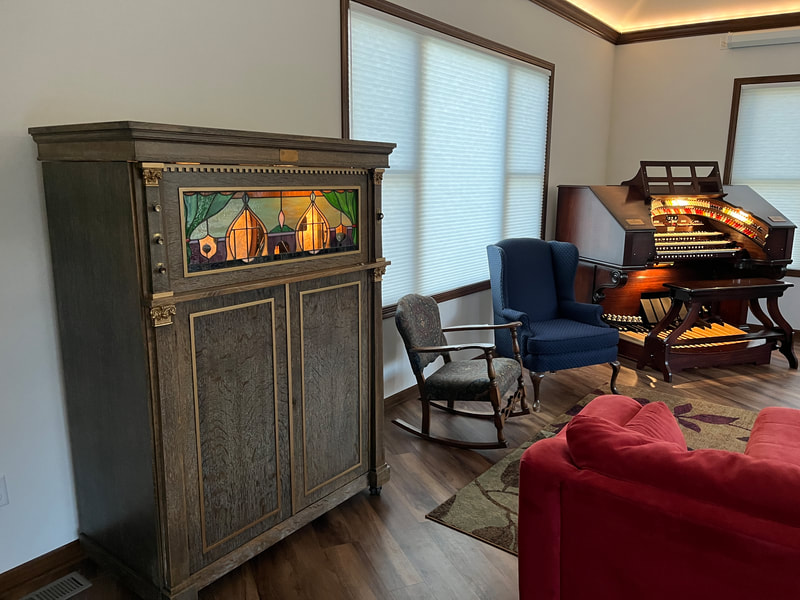|
Today brought us a new instrument to co-exist with the Wurtlizer within the music room. A Seeburg "KT Special" from 1927 (a year before the Wurlitzer was built). I submit this "update" as they are cousin instruments made in the same mechanical music era.
Beginning about 1910, reaching a manufacturing peak in the 1920's, and continuing until the early 1930's, the U.S. and some European countries designed and built coin-operated mechanical musical instruments for restaurants, bars, dance halls, and other types of parlors. They were usually built around a piano and one or more instruments such as xylophone, bells, organ pipes, and drums. They were operated by punched paper rolls with multiple tunes. Driven by electric motors, these machines contained large reciprocating pumps circulating air through long lengths of small tubes, through elaborate valves, and into tiny bellows controlling each piano note or other instrument or control. To attract attention, the machines had elaborate leaded glass fronts and fancy colored lighting. These machines were the forerunners of radio, jukeboxes, and other forms of musical entertainment. Besides offering musical enjoyment, they were money making machines for the proprietors gobbling up nickel after nickel. Captivated patrons were delighted to snappy popular tunes of the day and received hours of musical entertainment. Some machines had keyboards similar to upright pianos, but most were simply in large, elaborate cabinets. The Seeburg KT Special was introduced in 1924 and originally sold for $1,500. Marketed as "Ballroom Favorite”, it was designed to serve in places requiring the ultra-supreme in automatic orchestral development. The elimination of a keyboard reduced the instrument to convenient dimensions. The great depression of the 1930's and newer forms of entertainment such as radio and jukeboxes brought a rapid decline to these instruments during the 1930's and 1940's. By the 1950's, most had been cut up for scrap until few were left. As these are fairly rare, especially in this condition, a special thanks goes to my friend Paul Woelbing for making this acquisition possible. We look forward to sharing this machine and the music it makes with all who visit.
0 Comments
Leave a Reply. |
The BlogCheck out this page for project updates! Archives
July 2024
Categories |




 RSS Feed
RSS Feed
